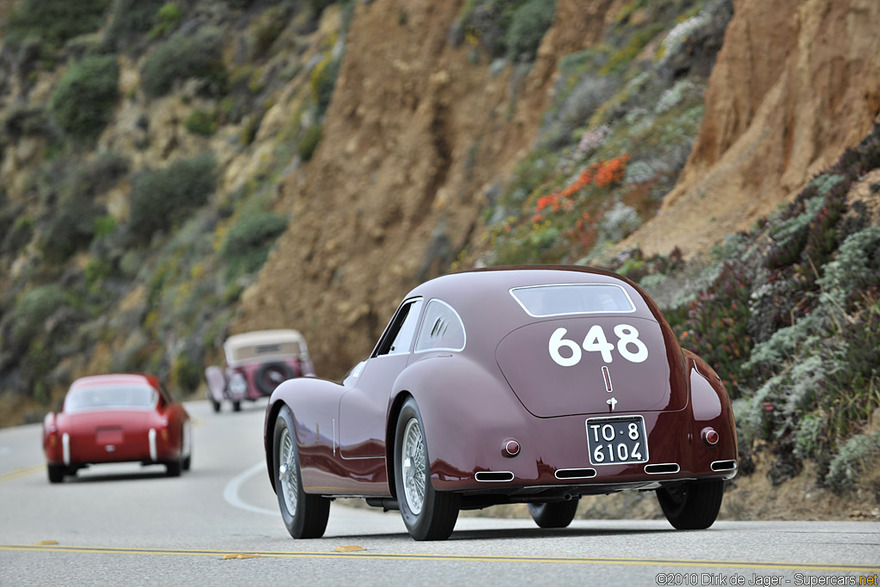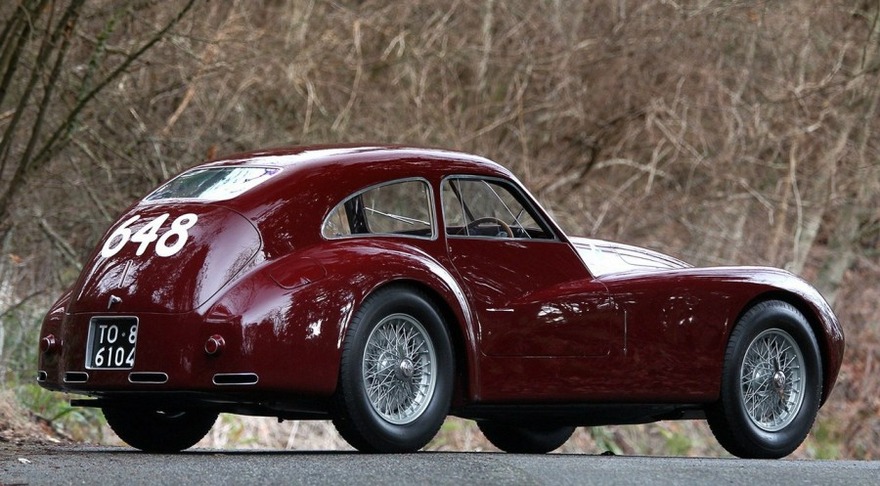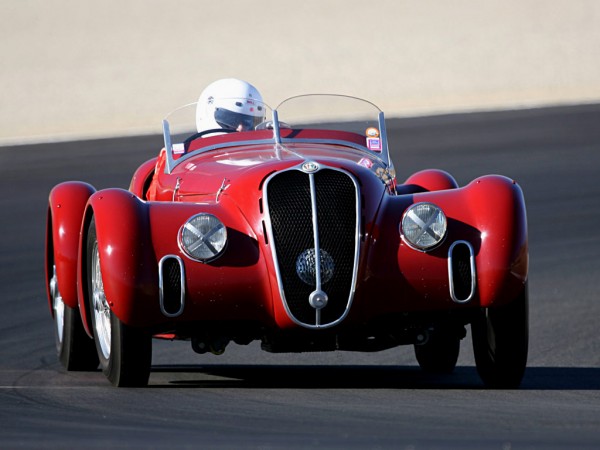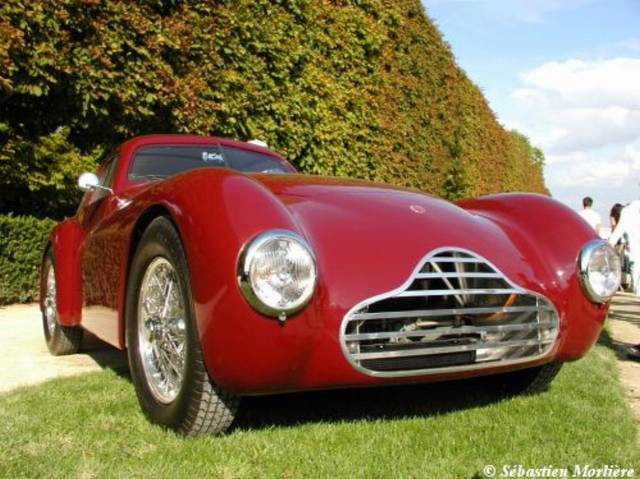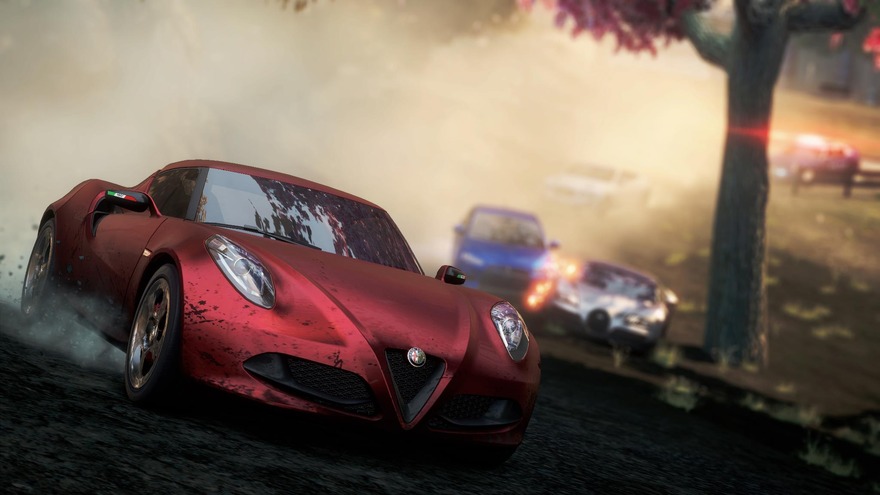Italians remember this legend since the time of the First Crusade. It tells about the first cross on the Walls of Jerusalem. It was erected by the founder of the Lombardia's noble Visconti family after the victory won in a severe battle. A Saracen's shield with a serpent devouring a man was taken as a trophy. This is the story of the symbol of Milan. Later the serpent moved to the badge of Alfa Romeo. Next to it is the red cross which stands for enterprise and power intended to promote global success. Since the beginning of the previous century, after two world wars and years of severe crisis, in the country of best world’s pizzerias, a company was rising which it is still able to come up to the mark. And it’s not pizzas they are making.
First cars produced by the company with the Alfa Romeo Automobiles S.p.A. name were called 6С 2300. Back in 1934 the naturally-aspirated engine with the total displacement of 2,309 cc was the first step on the company’s way to general recognition. Success achieved by amateur racing pilots driving the light-bodied Alfa Romeos pushed the company to build a sports version. Five years later the company’s engineer Bruno Treviso increased the initial displacement of a six-cylinder engine developed by Vittorio Jano to 2,445 cc, replaced the cylinder head and brought the compression ratio to 7:1. The resulting 6C 2500 model was the hope and pride of the entire company.
World War II messed up the Alfa Romeo’s plans for a racing career. After the end of the war it was decided to produce a limited edition of cars with the new aerodynamic sports body and using the pre-war 6C 2500 chassis at the Alfa Romeo Pomigliano d'Arco plant, which had been destroyed in a lesser degree. At the time when the overwhelming majority of European carmakers had a complete change in their politics and switched to producing affordable cars with the corresponding exterior, Alfa Romeo did not care a bit — they were sure that the models with bright appearance and great technical specifications just had to be a success. They were ready to win.
And in 1947 Clemente Biondetti won the Mille Miglia race. By the way, one of such cars is now on display at the Hellenic Motor Museum in Greece.
“Alfa Romeo 6C 2500 Berlinetta Sport by “Touring”. Produced in 1947. Six-cylinder inline engine, 2,443 cc, 95 hp @ 4,600 rpm. Top speed — 152 km/h”.
Next year, after making sure they had chosen the right strategy, the company built three more sports cars. One of them, defending the brand’s sports title, was the famous Competizione.
A streamlined closed two-seat bodyshell with lowered nose and elongated cabin was developed for the new reduced chassis of the Alfa Romeo Competizione. This shape turned out to be very efficient and the engineers were able to reach the top speed of more than 200 km/h during the trials. The radiator grille was quite different from those used by other street-legal cars and looked more like a grille of the Alfa Romeo 158 racing model.
The rear part of the car looked a lot like the 1939 Corsa coupé with the body customised by Touring tuning studio.
A 20-mm shorter wheelbase and upgraded rear suspension saved the weight and improved the car’s cornering stability. In order to increase the speed in corners the rear torsion bar with friction damper setup was replaced by a single transverse leaf spring and twin hydraulic dampers. The engine was also uprated — the six-cylinder motor was now producing 145 hp instead of the 120 hp delivered by the pre-war car.
Due to lack of funds and abilities after the war, only two 6C 2500 Competizione units were produced in 1948. Both of them had their debut in racing straight away. There were not so many competitions at that time, however, the results were quite successful. Juan Manuel Fangio was third in Mille Miglia both in 1949 and 1950 behind the wheel of the same car. The second Competizione secured victory in the 1950 Targa Florio.
The third car was built by the company in 1952. It was fitted with a three-litre engine. The car was codenamed 6C 3000 CM (Competizione Maggiorata) but it wasn’t known for any prominent achievements.
As it was the only luxury supercar available to customers, the Competizione model became perhaps the most expensive car of that period. Due to its unique and intriguing design this car fascinates and inspires the audience. At the 2002 Louis Vuitton Classic Concours d'Elegance held in Parc de Bagatelle in Paris this vehicle of Italian origin received the “Best in Class” and “Best in Show” awards. Later the company produced many other cars which were able to win the name of an elegant supercar for those who would like to boost their ego. By the way, this Alfa Romeo model was the first to use the company’s brand feature — a radiator grille in the shape of a shield. This “nose” together with the “eyes” of various sizes looks rather amazing.
The stunningly elegant bodyshell, the beautiful interior with the dashboard made entirely of wood, the comfortable seats could fully satisfy the needs of the upper class driving on the Italian roads of the 40s. However, in the opinion of the modern aesthetes, the post-war Alfas were not that beautiful: “It has a blurred bodyshell and very silly “facial” expression together with the unsporty rear part looking like the Soviet Pobeda”. Another point of view is that the pontoon body of the Pobeda (without distinct wings and running steps) was a progressive solution. It’s just illogical to blame these two cars of being similar or unsporty as it was this shape of body which was later adopted by the sports and race cars.
For more than 100 years Alfa Romeo follows its unique path. As a result, all their cars are clearly distinctive. Among the luxurious supercars produced by the Italian company one should note the vehicle sold last year at the Bonhams auction for the price of $9,360,000. The racing 1935 Alfa Romeo 8C-35 Monoposto fitted with the supercharged 3.8-litre eight-cylinder engine producing 330 hp became the most expensive Alfa Romeo ever to be sold by auction. The previous record-holder of this brand used to be the 1933 8C 2300 Monza sold in 2010 at the price of $6,660,000.
This year the company revealed the mid-engined supercar in Geneva and 500 exemplars of this wonderful 4C Concept model, which is the actual descendant of the 8C Competizione coupé also featuring a great number of stories, were sold within just one day. Four-cylinder turbocharged motor of the modern good-looking supercar, known for the 159 or Giulietta models, delivers 200 hp with the displacement of just 1,750 cc. You think it’s rather weak? However, the talent of the Italians, who can be called the real experts in fast cars, can delight you even here. They have thoughtfully reduced the weight by using aluminium and carbon fibre. Four-metre long coupé weighs just 850 kg and sprints to 100 km/h in less than 5 seconds. The car fitted with dual-clutch automatic transmission is able to reach 250 km/h. Isn’t that significant?
The Alfa Romeo supercars designed to attain global success are dissimilar to any other car. They are the actual number one when talking about “dissimilarity”. Fans of mozzarella, Adriano Celentano, Luciano Pavarotti and Leonardo da Vinci.
And nothing feels better than enjoying cars in their various shapes and variations, the cars which used to run past the Italian tea plantations in the Tuscan village in the province of Lucca. Welcome to the retro atmosphere with the wonderful Alfa Romeo starring in this photo story.
Sources: a777aa77.ru, rorocho.livejournal.com, de.autoviva.com, images.forum-auto.com

